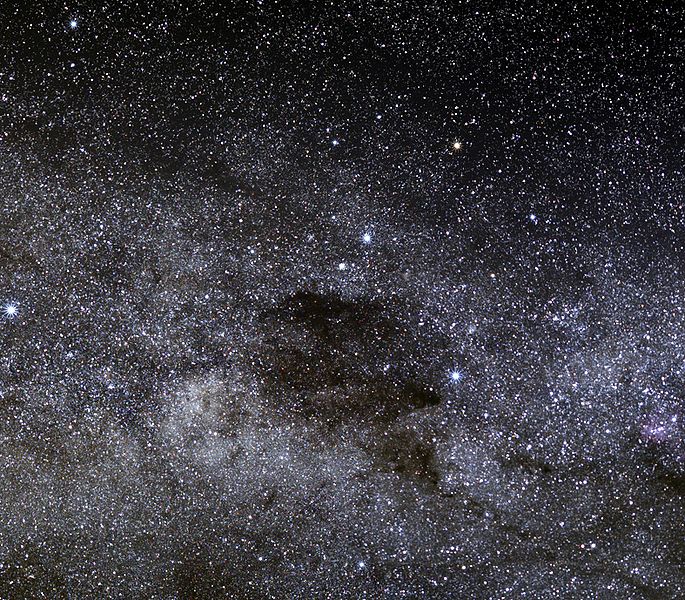Fil:Coalsack-ESO-B06.jpg

Storlek på förhandsvisningen: 685 × 600 pixlar. Andra upplösningar: 274 × 240 pixlar | 548 × 480 pixlar | 877 × 768 pixlar | 1 170 × 1 024 pixlar | 1 574 × 1 378 pixlar.
Originalfil (1 574 × 1 378 pixlar, filstorlek: 1,22 Mbyte, MIME-typ: image/jpeg)
Filhistorik
Klicka på ett datum/klockslag för att se filen som den såg ut då.
| Datum/Tid | Miniatyrbild | Dimensioner | Användare | Kommentar | |
|---|---|---|---|---|---|
| nuvarande | 21 november 2009 kl. 18.58 |  | 1 574 × 1 378 (1,22 Mbyte) | Fabian RRRR | {{Information |Description={{en|1=The Coalsack is one of the most prominent dark nebulae visible to the unaided eye. A beautiful sight in the southern sky, the Coalsack casts a dark silhouette against the Milky Way’s bright stripe of stars. The Coalsack |
Filanvändning
Följande sida använder den här filen:
Global filanvändning
Följande andra wikier använder denna fil:
- Användande på de.wikipedia.org
- Användande på el.wikipedia.org
- Användande på en.wikipedia.org
- Användande på fi.wikipedia.org
- Användande på fr.wikipedia.org
- Användande på ja.wikipedia.org
- Användande på pl.wikipedia.org
- Användande på ru.wikipedia.org
- Användande på simple.wikipedia.org
- Användande på sk.wikipedia.org
- Användande på tl.wikipedia.org
